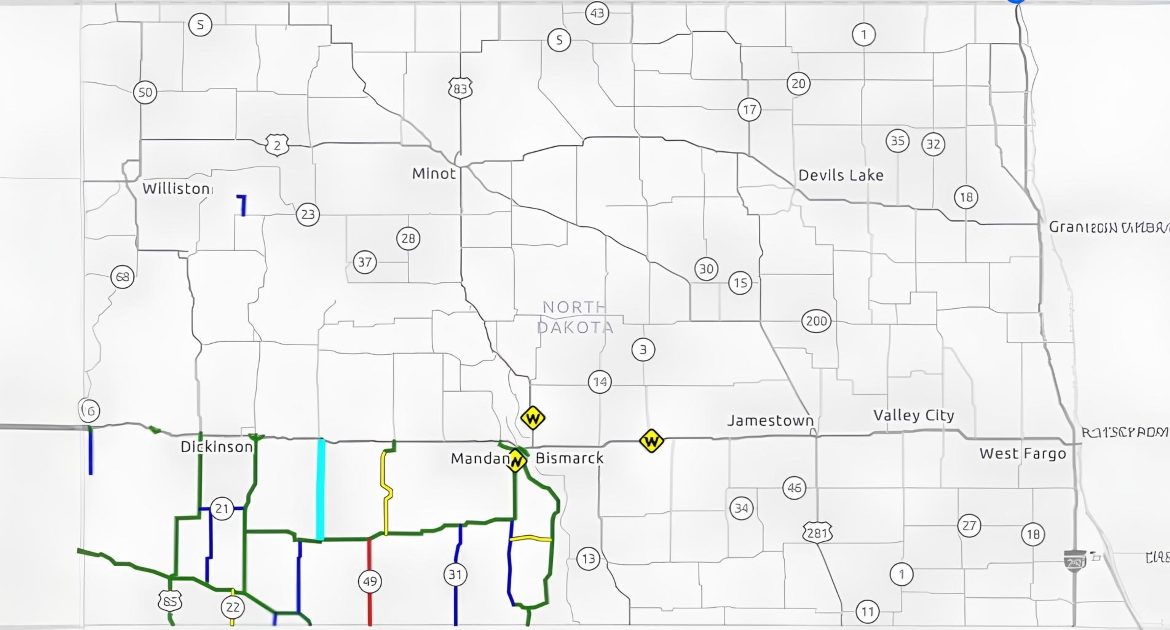Each year, North Dakota enforces Spring Load Restrictions to protect its highways from damage caused by heavy loads during the thawing season. These restrictions limit axle weights on affected roads, requiring carriers to plan ahead and adjust their loads to avoid costly fines.
This guide explains when the restrictions start, how they are determined, and how they impact heavy haulers.
When Do North Dakota’s Spring Load Restrictions Start?
Spring load restrictions in North Dakota are not set to begin on a fixed date but are implemented based on weather conditions, temperature data, and pavement strength testing. As of today’s date, restrictions are currently taking place in the southwest region, although they will gradually expand to the rest of the state.
The North Dakota Department of Transportation (NDDOT) uses real-time data to initiate and lift restrictions as roadbeds stabilize.
For up-to-date restrictions, visit the NDDOT’s road map: Spring Thaw Road Restrictions (You can also find a printable map through this link)
How Are These Load Restrictions Determined?
The NDDOT uses advanced technology and real-time monitoring to decide when restrictions should begin and end. The key factors include:
1. Temperature Probes in Pavement Layers
- NDDOT installs temperature sensors in the base layers of pavement sections.
- Once base temperatures reach 32°F (0°C), roadbeds begin thawing, making them more vulnerable to damage from heavy loads.
2. Long-Range Temperature Forecasts
- NDDOT evaluates weather patterns, tracking when daily temperatures hover above freezing for extended periods.
- Warmer temperatures accelerate thawing, triggering early load restrictions.
3. Falling Weight Deflectometer (FWD) Testing
- This specialized equipment measures the strength of roadway bases and the surface condition of asphalt pavement.
- The data helps predict when load restrictions should be implemented or lifted.
Important Note:
The most severe pavement damage occurs within the first four weeks of thawing. As a result, NDDOT may impose load restrictions on short notice to prevent road damage and costly repairs.
North Dakota’s Load Restriction Chart
For a detailed breakdown of per-axle weight restrictions, see the chart below:

How Overweight Permit Fees Are Calculated in North Dakota
If you need to transport an overweight load during spring thaw restrictions, you must obtain a permit and pay overweight fees based on:
1. Gross Vehicle Weight (GVW) Charges
- The Ton Mile Fee Schedule determines the cost per mile based on your total vehicle weight.
2. Axle Group Weight Charges
- Permits may also be charged per axle group.
- The heavier the axle group, the higher the per-mile fee.
Checkout the Ton Mile Fee Schedule to estimate overweight fees.
Conclusion:
North Dakota’s Spring Load Restrictions are essential for preventing road damage, but they also require careful planning from truckers. By monitoring restriction dates, adjusting routes, managing axle weights, you can avoid costly fines and keep moving efficiently.





